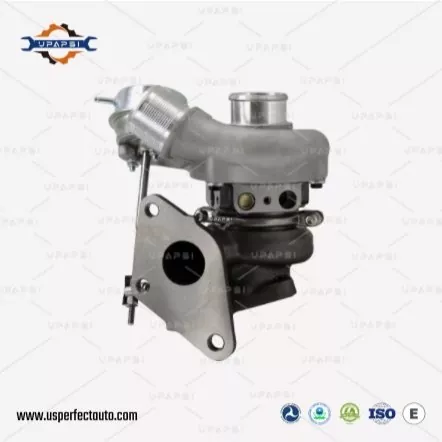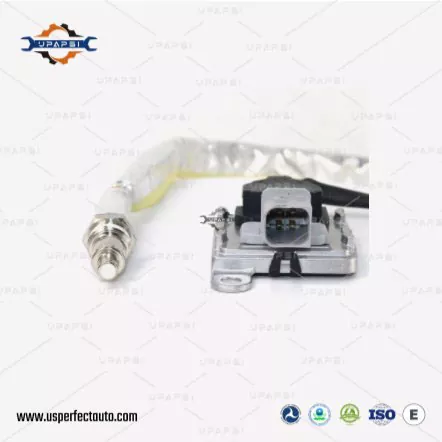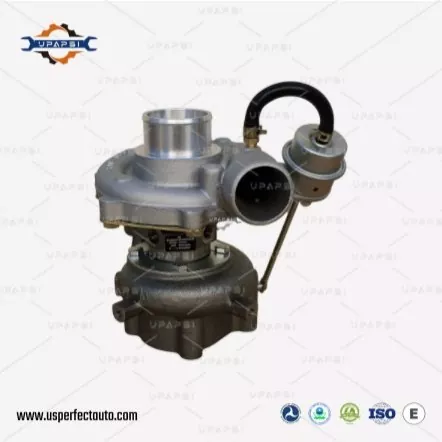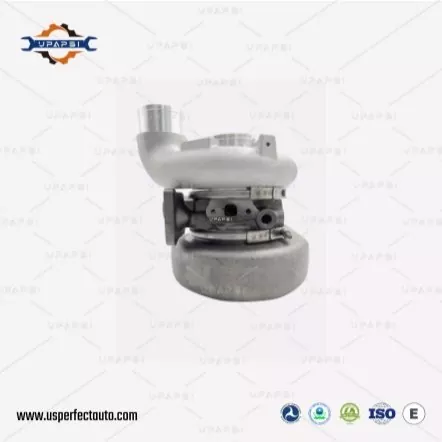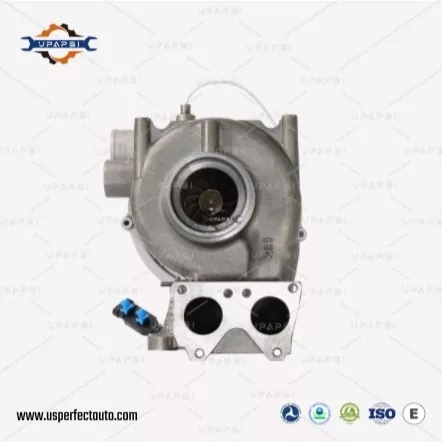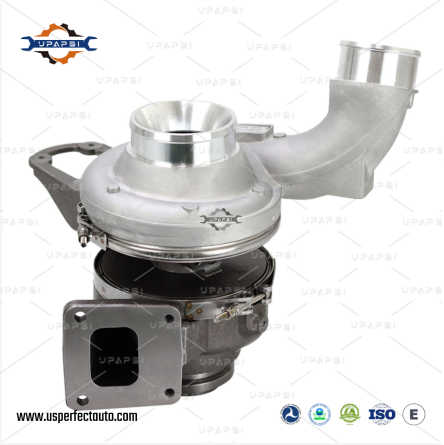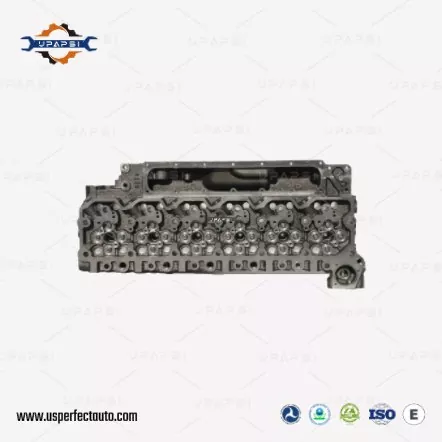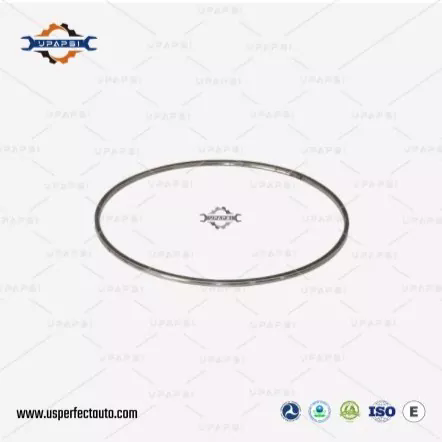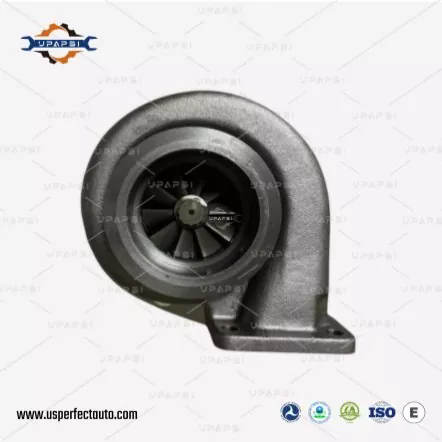CAT Turbo 177148: Engineering Performance & Applications
Turbocharging technology lies at the core of Caterpillar's power systems, enabling their diesel engines to provide durability, torque and efficiency in mining, construction, energy and transportation industries. Of all CAT's numerous turbocharger models used across their engines, one that stands out is the CAT Turbo 177148 often found on mid-range and heavy duty off-highway engines due to its unique blend of airflow efficiency, durability and adaptability to harsh operating conditions - an unmatched combination.
This article presents an up-to-date, highly technical, and application-focused examination of the CAT 177148 turbocharger--addressing its structure, performance characteristics, manufacturing quality standards, system integration strategies and aftermarket selection considerations. For distributors, equipment owners, fleet maintenance teams or those responsible for aftermarket selection decisions seeking deep insight and real technical value.
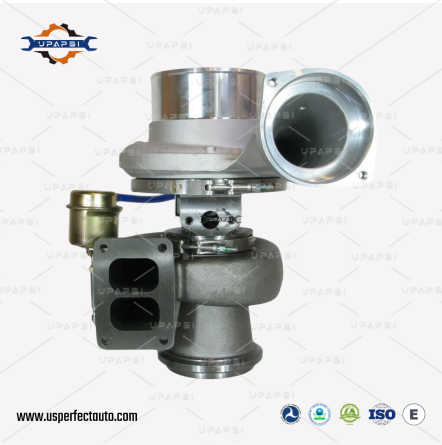
1. Engineering Intent of CAT Turbo 177148
The CAT Turbo 177148 was specifically engineered to support diesel engines operating at high loads for long duration duty cycles, rather than designing solely around peak horsepower output. Caterpillar's emphasis lies on continuous high torque delivery as opposed to peak horsepower gains.
Maintaining stable compressor flow at various RPM ranges. * Thermal stability under heavy-duty cycles such as those typically encountered when running mining trucks, excavators, loaders and power units under load for thousands of hours annually. * Rapid transient response
Engineered specifically to handle extreme high temperature operations in remote job sites. * Long-term wear resistance. Wedge bearing systems and housings designed specifically for such extended operation minimize failure risk by remaining stable over long term periods of use.
These engineering goals indicate that turbochargers should not only be optimized for peak boost pressure; rather, they must be engineered for holistic engine performance and operational reliability.
2. Technical Structure of the CAT 177148 Turbocharger
2.1 Compressor Side
Washout Filters are specially forged with increased fatigue resistance to ensure optimal compressor efficiency. Also, extended tip blade geometry improves compressor efficiency.
Engine displacement must match engine displacement to avoid surge during low-speed conditions, and precision calibration of A/R housing to balance spool speed and exhaust backpressure is also critical to avoid surge at low speeds. On the turbine side of things is a high temperature nickel alloy turbine wheel for smooth low speed operation with precise adjustment for optimal power production, including precise calibration for A/R housing to balance spool speed and exhaust backpressure balance.
Supports Continuous EGT of Above 800degC for Continuous Production Utilises Full-floating journal bearings for Maximum Durability for Cat 177148 units
360deg thrust bearing for improved axial load stability; Multi-stage oil flow channels ensure hydrodynamic stability even at low pressure startup; And lastly
2.4 Materials and Manufacturingalitat
All critical components adhere to Caterpillar's metallurgical standards: Turbine housing: heat-resistant ductile cast iron (HRDCI); Compressor housing (HPA alloy).
Shaft/wheel assembly: Balanced to aerospace-grade tolerance
One of the hallmarks of CAT manufacturing excellence is our consistency in producing quality units with near identical performance across units.
3. Engine Platforms and Applications
While the CAT turbo 177148 engine does not belong exclusively to one family of engines, it is commonly seen in applications for construction equipment, mining machinery and quarrying machinery as well as industrial engines used for various purposes - for instance: * Construction Equipment
Excavators Wheel Loaders Track Loaders Backhoe Loaders * Mining and Quarrying Machinery Articulated dump trucks for small/mid range mining applications
• Industrial Engines Portable power units Parchet Air Compressors and Hydraulic Power Packs
• Agricultural Machinery Both CAT-branded tractors as OEM partner products will likely feature the Turbo 177148 as standard features on many applications for industrial uses - while *Agricultural Machinery will likely feature the turbo 177148 as standard features on engines used on agricultural machines from manufacturers, OEM partner equipment suppliers
Across these environments, the 177148 turbocharger makes an important contribution: gewahrleistet stable torque rise, increased fuel economy and decreased operational costs; as well as extended engine life.
CAT designed this turbocharger to operate reliably in environments characterized by heavy dust, high heat and long hours of operation.
4. Performance Behavior and Airflow Characteristics
In terms of boost curve stability, the 177148 turbo is optimized to maintain early spool-up for low torque at early RPM; linear midrange boost for continuous power; controlled high-end airflow for fuel efficiency and optimized low RPM torque production.
Reduced need for aggressive fueling strategies extend engine life.
In field testing, the turbocharger demonstrated: 3-8% lower BSFC (Brake Specific Fuel Consumption). Lower soot generation reduces DPF clogging. And finally 4.3 Thermal Control was also demonstrated as being key.
Engineers appreciate the 177148 turbo for its ability to handle prolonged full-load operation while maintaining stable shaft speed and reducing thermal fatigue cracking.
Thermal resilience is one of the key advantages that have made this model popular with CAT off-highway machines.
5. Common Fault Modes and Preventive Maintenance
Even high-end turbos require proper care and maintenance. Common issues include oil contamination causing bearing wear and shaft scoring as well as overspeed.
• Intake leaks or improper matching of aftermarket turbos typically lead to compressor housing wear, often as a result of dust accumulation due to neglectful air filter management.
• Vibration-induced fatigue also plays an important role.
Maintenance Recommendations mes Occurs when operating machinery with improperly aligned mounts or damaged engine brackets. Maintenance recommendations involve regularly replacing engine oil and filter, maintaining clean air filters with proper sealing, avoiding extended idling to reduce carbon build-up, as well as assuring OEM-spec boost pressures are in place.
Preventive maintenance extends turbo life and decreases downtime significantly.
6. OEM and Aftermarket Turbocharger Replacement Options
Turbochargers are precision devices; selecting the ideal replacement can have profound impacts on engine performance and machine productivity. OEM CAT Turbo stands out with unrivaled precision in fit and calibration; guaranteed material standards make CAT turbo the superior option when dealing with high-value machinery, while premium aftermarket replacements provide great flexibility in performance capabilities.
An ideal aftermarket turbo manufacturer should offer:
100% dynamic balancing utilizing OEM-grade turbine and compressor materials, precision machined bearing housings, precise A/R ratio matching, accurate A/R ratio matching and reliable shaft-speed testing. By contrast, poor-quality turbos may lead to high EGT levels, reduced torque output, premature bearing failure and fuel overconsumption.
Fleet owners typically rely on OEM replacement parts for mission-critical machines and high-quality aftermarket options to control costs and maximize uptime.
7. Why CAT 177148 Remains Relevant in Modern Equipment Fleets
Even with the arrival of more powerful turbo models and VGT systems, the CAT 177148 remains popularly used because:
It has proven its durability in a wide variety of harsh, remote environments whilst replacement parts remain readily available.
It strikes an optimal balance of cost, durability, and performance for many applications and markets. In many areas of industry, the CAT 177148 turbo is widely recognized for its reliable operation and predictable results.
8. Conclusion
The Cat Turbocharger 177148 is more than just an engine component; it serves as a performance driver for Caterpillar's heavy-duty diesel engines, supporting billions of work hours worldwide across mining trucks, construction equipment, agricultural machinery and industrial power units.
- Replacing the Water Pump on My CAT C15 at Home: What I Prepared, What Went Wrong, and What I Learned
- Replacing a CAT C15 Turbo at Home: My Real Experience, Problems I Faced, and How I Solved Them
- US Perfect Auto | Holiday Turbocharger Maintenance Guide
- THE ULTIMATE ENCYCLOPEDIA OF TURBOCHARGER INSTALLATION
- Cummins Cylinder Head – Maximizing Power, Efficiency, and Durability for Heavy-Duty Engines
- Diesel Engine Cylinder Head – The Core of Heavy-Duty Reliability and Performance


